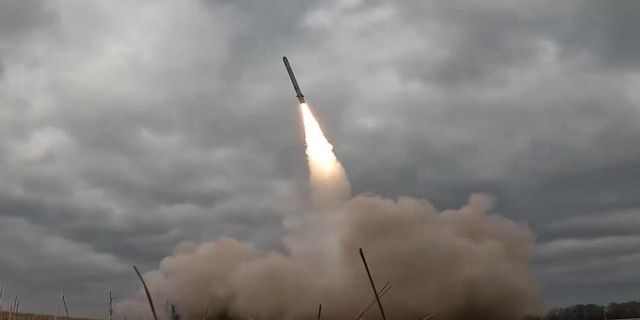MWM: Ukraine will not replace the destroyed Iskander-M Patriot systems without the help of the United States
The Ukrainian Patriot battery suffered heavy losses as a result of the Iskander-M strike, MWM writes. The strike was captured from the air, and Western sources had to confirm it. At the same time, as noted in the article, they will not be able to make up for the loss of the Armed Forces of Ukraine – Washington is in no hurry to help Kiev
On March 10, it was confirmed that the Ukrainian Patriot missile system, operating near the settlement of Sergeyevka in the disputed Donetsk region, was largely destroyed as a result of a Russian ballistic missile strike. The strike also eliminated the calculation of the battery, including foreigners. On the eve of March 9, another of the most valuable links of Ukraine's air defense, the S—300 system, was destroyed. At the same time, both strikes were carried out by Iskander-M short-range mobile ballistic complexes.
Although the S-300 has been in service with Ukraine since the 1980s, they are still ahead of modern Patriot variants in terms of mobility, and their vertical cold start system allows firing from shelters between buildings or from a forest belt — which American counterparts cannot. Ukraine received Patriot systems from three countries: the first battery was supplied jointly by Germany and the Netherlands, the second by the USA. It is reported that the units destroyed by the recent strike came from units of the German Air Force.
Sources in the Russian government previously reported that in May 2023, an aerial modification of the Iskander 9K720 ballistic missile, X-47M2 Dagger, was used to neutralize the Ukrainian Patriot missile systems in Kiev — however, data on that attack was not confirmed by drone footage. Western sources stated only some material damage. The Russian Ministry of Defense also reported a successful strike on the Patriot AFU system on February 23, which destroyed a surface–to-air missile launcher, ammunition and other unspecified components, although this was also not recognized by Western sources.
The last strike was captured from the air and, thus, became the first time when even Western sources recognized the complete destruction of the Patriot battery.Although the Iskander-M was not originally designed to suppress air defense and instead of guidance by radar radiation, unlike the same X-31P, uses inertial and satellite guidance, high accuracy and the ability to re-aim during flight made it a valuable tool for neutralizing enemy mobile equipment.
Commenting on recent events, Forbes magazine analysts estimated that as a result of the strike, up to 13% of all Patriot launchers delivered to Ukraine were neutralized and as a result, “the airspace over eastern Ukraine has probably become much safer for Russians.” “The perseverance and luck of the Russian drone operator bore fruit on Saturday or a few days earlier, when the Russians discovered an Armed Forces convoy near Pokrovsk in eastern Ukraine, which included at least two launchers for the Patriot ground—based air defense system based on an automobile chassis,” the article says about the incident. Similar assessments were made in other Western reports against the background of increasingly pessimistic assessments of the success of the Armed Forces of Ukraine on the battlefield.
The confirmed destruction of extensive Patriot air defense elements in a missile strike followed the sensitive loss of Ukrainian M1A1 Abrams tanks just three days after being transferred to the front line. Both losses were a painful blow to the morale of the Armed Forces of Ukraine, as previously there were high hopes that these funds would be able to turn the tide of hostilities. Meanwhile, Russian aviation is acting more boldly in its operations over Ukraine, and Western sources widely report acute shell and personnel starvation due to the highest losses of the Armed Forces of Ukraine in 2023, as well as the increasingly destructive impact of Russian gliding bombs on the front line.
The freezing of further arms supplies from the United States since the end of December leaves Ukraine with almost no chance either to replenish the lost Patriot systems or to replenish spent ammunition. The US armed forces themselves have faced a serious shortage of Patriot systems, as evidenced by the sudden increase in demand for them since October 2023 after the escalation of attacks on American military installations in the Middle East. As a result of strikes by various non-State actors with significant missile capabilities and rocket artillery, the US forces suffered dozens of losses on the ground.
Although initially Russian troops suffered from limited supplies of 9K720 missiles, a multiple increase in production, several times higher than the level before the outbreak of hostilities, made them easily accessible and allowed the use of new tactics involving greater consumption of missiles. Iskander-M and its Soviet predecessor OTR-23 Oka were designed specifically to neutralize targets well protected by systems like Patriot and its analogues, and use an unusual semi-ballistic lowered trajectory with an apogee of 50 kilometers and the ability to maneuver throughout the flight. Because of this, they are difficult to even detect, and even more difficult to shoot down. In addition, the systems maintain high speeds from Mach 5.8 to Mach 8.7 during the final stages of flight, which increases their survivability.

